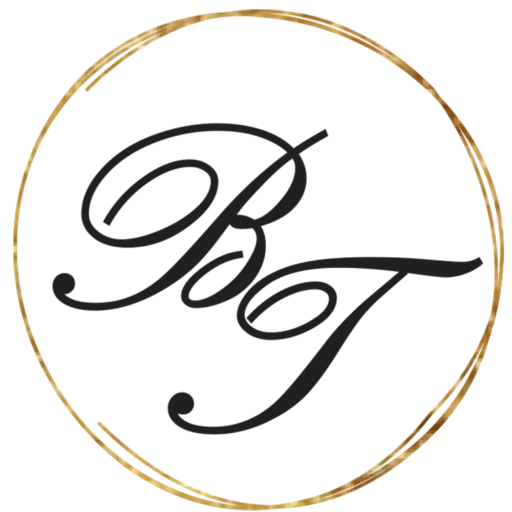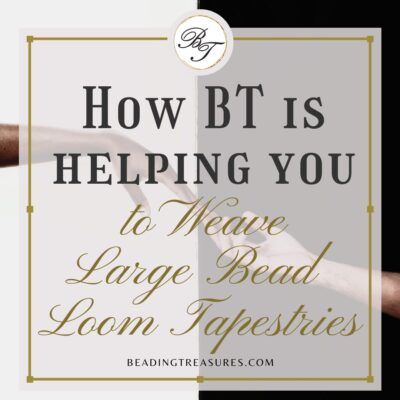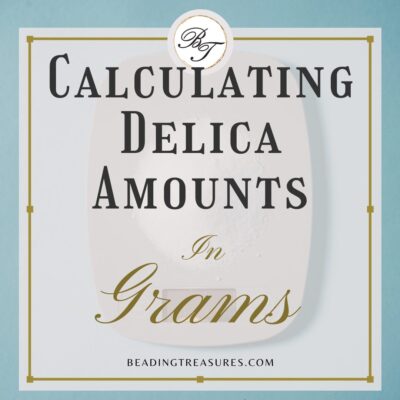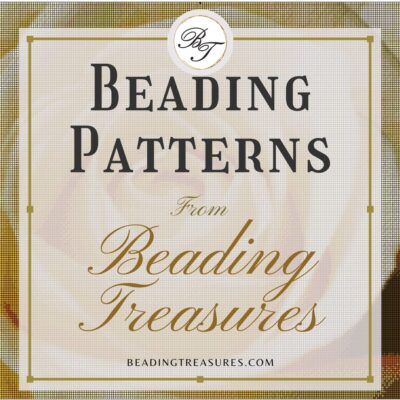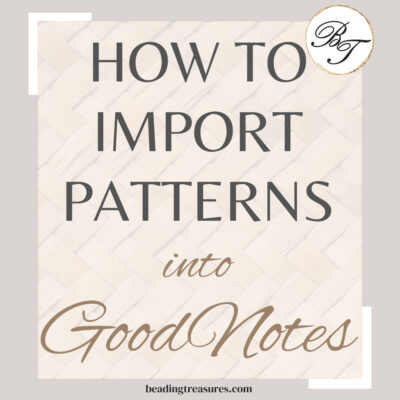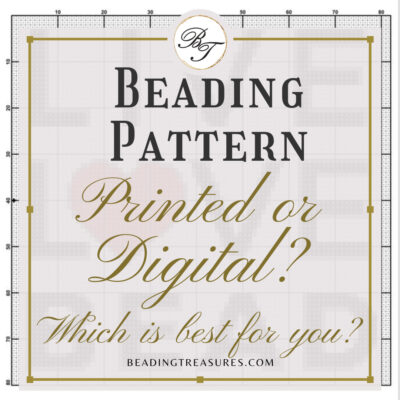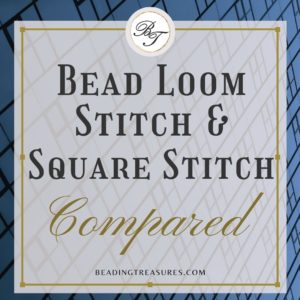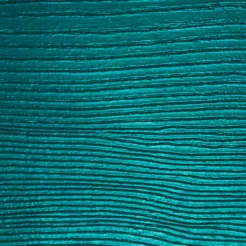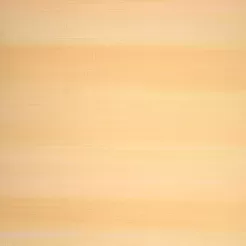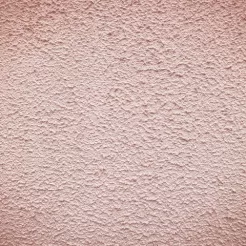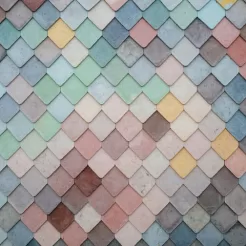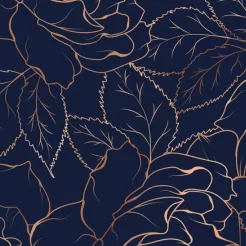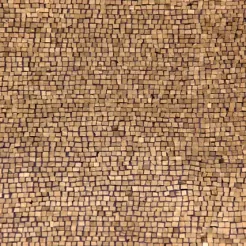
Ever Growing List of Bead Weaving Terms & Definitions !
Bead Weaving has its own language and terminology, some of which are used in other forms of beading.
We have defined the most commonly used terms to dispel any confusion.
If there is some terminology that is not listed here, please leave a comment below and we will add it to the list.
Arm-Span
A length that is the distance between your two arms when outstretched. Sometimes called a wingspan and is commonly used when referring to the length of thread.
Aurora Borealis – AB
Often abbreviated to AB. This is a micro-thin layer of metal covering a bead, giving it a rainbow Iridescent finish. It is a durable finish as the metal is permanently bonded with the glass. Aurora Borealis is also referred to as Rainbow, Iris or Fancy.
Bead Loom
A bead loom is a device used to weave beads into a cloth-like beaded fabric. It is used to create panels of flat beadwork. A bead loom is similar to a regular fiber loom, except with beads strung on the weft instead of fiber (yarn). Generally one bead is positioned between each warp thread, and then the weft is brought to the front of the warps and back through all the beads to lock them in place.
In loom bead weaving, the beads align in rows and columns.
Bead Mats
A Bead Mat is a piece of material that has just enough pile to its surface to prevent the rolling of beads on your work surface. It makes picking beads up with a needle easier. There are sticky bead mats that hold beads in place and prevent them from rolling around, this are typically good for travelling.
Beading Needles
These are very similar to sewing needles, however, are usually longer and thinner. Beading needles need to be thin to be able to make multiple passes through the tiny holes of the beads. The larger the number used to determine the type of the needle, the thinner it is.
Bead Spinner
A specially curved bowl on the inside, with a central spindle used to spin the bowl around at speed, making it easier and much faster to string strands of seed beads. A curved beading needle is placed in the beads inside the bowl and beads will hop on the needle as the bowl is spinning around and the needle is facing the opposite direction. The beads are then pushed onto the thread.
Bead Stopper or Bead Stop
A simple spring-like fastener that is clipped that onces pressed on both sides leaves a gap in which to insert a strand or thread. This helps to prevent beads falling off the end.
Bead Thread
Bead threads are specifically designed for beading and they are designed to be strong and stretch-resistant. Bead Threads are mainly made of synthetic fibers to reduce the risk of fraying or rotting and some may have a coating that helps to reduce the unravelling of knots.
Bead Tray or Beading Tray
A tray allowing for the organization of beads, straight on the mat or in small containers. This tray will serve much like a painter’s palette where the bead colors are chosen and be picked up with a needle.
Beeswax
Beeswax is used to condition the beading thread (weft in loom weaving) when beading. The wax coats the thread and prevent knotting and tangling. This in turn helps to avoid the fraying of the thread. Not all threads need beeswax however.
CALIPERS or CALLIPERS
An instrument used to measure the dimension of small objects such as beads. They are usually in the form of a graduated ruler with one sliding jaw and one that is stationary allowing measurements to be taken from the ruler, giving precise measuremnts. Calipers with a digital display give more precise readouts of the dimensions measured.
Ceylon Bead Finish
A glass bead finish that is used with translucent or transparent beads to give a shiny pearlized finish. The use of Ceylon before a color indicates the addition of a luster coating to the exterior of a bead or an inside coloring effect to an opalescent bead.
Chain-nose Pliers
Chain-nose pliers are rounded on the outside but have flat inside edges. They are good for gripping wire or a jump ring, as opposed to round-nose pliers, which are better for making loops.
Color Lined
Color lined is a term associated with transparent or translucent beads that are lined with a color that shows through, translating that color to the bead.
Color Wheel
Is a tool that arranges a number of hues in the visual spectrum around a circle. This arrangement allows us to understand the relationship between the adjacent and opposite colors.
Complement Color
The color directly across the color wheel from any hue.
Crochet Bead Tapestry
This kind of tapestry is made with the simple chain stitch of crochet. A bead is added to the stitch following a pattern to complete a tapestry design. Patterns for Loom bead weaving can be easily used for crochet bead tapestry. This type of bead tapestry weaving eliminates the need for a loom.
Ceylon
Ceylon is a name given to the luster outside coating of beads, giving a whiting shine to the base color. The Ceylon finish is typically added to medium to light colors such as pastels.
Delica Beads
Also known as Miyuki Delica Beads. A variety of glass seed bead that is small and perfectly cylindrical, so they easily snap into place in peyote stitch, brick stitch and loom bead weaving. They also have large holes for their size, making it easier to pass multiple strands of thread through each bead.
Dyed
Some beads, notably Seed Beads, are dyed or painted. A surface colorant is applied after the bead has been made. This seems to apply most to some beads of a pink, purple or fuchsia coloring, and the result is that beads of these hues are more likely to fade or have their coloring rub or wash off. A spray of suitable varnish can help to slow the deterioration. UV light (from the sun and fluorescent bulbs) may also fade dyed beads.
Flat-nose Pliers
These pliers have straight sided outer and inner jaws. they can be used to break extra beads during bead weaving. You will need the flat inner jaw for squashing shut crimp tubes, folding down ribbon ends and keeping a good hold of wire. Used in pairs they can used to open and close jump rings.
Fringe
A fringe adds motion and interest, and so serves to embellish a piece. Often used at the bottom of bead tapestries, in beaded purses, or embroidered on the edge of clothing. Fringe is commonly used to finish artwork or jewelry created with bead loom stitch or other bead stitching techniques.
Gauge
Gauge is a measurement of the thickness of something, be it beads, wire, thread, or needles. Generally, smaller numbers indicate thicker sizes. Wire gauges ranges from 10 (very thick) to 28 (very thin). Seed bead gauges are written as fractions, like 6/0 (~3.7mm) to 15/0 (~1.5mm). Size 11/0 seed beads are the most common in bead tapestry weaving. Thread does not have a standard gauging system, each manufacturer has their own.
Glass Beads
Glass beads are made of glass and are often round in shape with a hole in the center allowing for a thread to pass through an so facilitating the creation of bead tapestries and jewelry etc.
Gold or Gilt Lined
A transparent bead with a gold colored lining to its hole. Not as hard wearing as Silver Lined beads, and the gold colored lining may be lost over time.
Hue
A particular gradation of color; a shade or tint. The degree of lightness, darkness, strength of a color.
Iris
An Iridescent coating on opaque glass or darker bead colors giving a rainbow or metallic effect.
Loomwork, Loom Weaving
Beadwork can be done by hand, but a bead loom makes it faster and easier. For larger projects, you can make your own. The act of creating a piece using a loom, thread and beads is called bead loom weaving. The final product created is called loomwork.
Matte
Not shiny. Matte finish beads have usually been chemically etched or tumbled to remove the top layer of the bead surface, creating a low luster velvety non reflective finish. However, if the beads, typically seed and bugle beads, have been color lined with brass, silver, or copper, the surface will be matte but with a shiny surface showing through from the color-lining. Also known as Flat Finish.
Mettalic
Opaque coatings that include gunmetal, bronze, gold, silver, copper, antique gold, or antique silver giving a shiny metal like surface to beads
Miyuki
Miyuki is a Japanese beadmaker known for their seed beads, Delica beads, and other glass beads. They are considered very high quality and uniform in size, so they make bead weaving easier.
Miyuki Delica or Delica Beads
Japanese Seed Beads trade marked to to the Miyuki Shoji Corporation. They are made of precisely cut glass giving them a uniform size, shape and color. They typically have large holes compared to their diameter and have a rounder shape with thicker walls than normal seed beads.
Monofilament
Clear plastic thread used for fishing line. It is almost transparent, easily stretched and cut, and so it is not very durable.
Nylon Beading Thread
This thread is strong, supple and drapes well. It is good for use with lightweight beads such as seed beads, and for bead weaving.
NYMO
A nylon thread that was originally developed to be used as a stitching thread in the manufacture of shoes. It is strong, supple and perfect for beading with seed beads.
Opaque
Not allowing light to pass through. Opposite of transparent.With this finish light will not to pass through the object which when applied to beads means you cannot see through them. From a jewellery design perspective these beads often provide a good contrast when alongside shiny, matte or beads with other applied finishes.
Overhand Knot
Useful knot for tying off ends of thread, anchoring seed beads and incorporating new threads into a piece.
Peyote Stitch
A basic off-loom bead weaving technique used to make jewelry or decorative objects. Using a beading needle and thread, beads are woven together is a zig-zag fashion.
Picasso Finish
A spotty or speckled coating on the outside of beads. The spotty coating colors can vary from a light yellows to dark browns and cover base colors of beads giving more earthy color variations.
Platinum
A heavy, malleable, corrosion resistant, grey-white precious metal. Platinum is more precious than gold.
Pliers
This is a general term used to refer to small tools with two handles and pincers at the tip form holding or pulling small tips. There are many types of pliers, but in bead weaving Long-Nose pliers are commonly used, to break unwanted beads.
PNBT
A bead weaving acronym meaning Pass Needle Back Through.
PNT
A bead weaving acronym meaning Pass Needle Through.
Preciosa Ornela Beads
Preciosa Ornela is a complany based out of the Czech Republic. They offer rocaille beads of a higher quality and wide range of colors suitable for bead weaving. These are the traditional Czech beads.
Pseudo Bead Loom Weaving
A methodology created and used by beading treasures to weave beads away from the loom and then added to the loomwork on the loom when possible.
Saturation
How pure a color is .A fully saturated color does not have any black, white or other hue added to it.
Seed Beads
Small glass beads, named for their dainty size. Generally made of glass, although metal and plastic are also used. They come in a seemingly endless range of colors and finishes and they are very versatile in their use. Seed beads come in a range of shapes, most commonly they have a rounded doughnut shape, but the appearance of this varies between manufacturers. Also popular is a cylindrical shape, often precision made, perfect for very uniform work when producing heavily beaded items or pieces made on a bead loom. Cylindrical beads tend to have a larger hole so they allow for multiple passes of the thread in complicated designs. Other shapes include a teardrop with an off-center hole (Magatama), triangles, cubes, beads with six sides (hex), beads with two-facets (two-cuts) and one-facet (Charlottes).
Shade
Black added to a pure hue.
Silver Lined
Transparent glass beads lined with a silver color. Colored glass silver lined beads have a special brilliance and sparkle. Silver lined bead are harder wearing than color lined ones
Square Stitch
A stitch in which beads are sewn in regular rows and columns resulting in a finish that looks like loom work.
Stopper Bead
A bead used to stop other beads falling off a thread whist you are working. Pass your thread through the bead and then through the bead again from the same side. For clarity use a bead of a different color. Remove before finishing off the piece. Alternatives are a piece of low-tack masking tape, a paper clip, bulldog clips or a commercial product called a ‘bead stopper’ (a coil of wire that grips the thread).
Storage Container
Beads can be stored in any small container that seals securely. The best storage systems let you view many of your beads at once, and easily remove beads without spilling them.
Stringing Beads
This refers to the act of sliding a bead onto any thread-like medium such as a weft thread to weave into a tapestry.
Tail Thread
It refers to the short length of thread that is attached to the loom to keep out of the way at the beginning of your beadloom work. This is done to aid with the starting of the bead weaving. When it is no longer needed, it is then woven within the rows of tapestry already woven and so concealed.
Tapestry (Bead)
Bead Tapestries are made by weaving tiny beads on to a warped loom using bead and threads to form an image.
The loom is warped with a specific number of parallel threads. A needle threaded with a beading thread, referred to as the weft is used to load beads onto the weft. The beads are then woven row by row in a grid-like framework that holds the beads in place according to a designed pattern. The end result is a fabric like image made entirely out of beads and threads.
Temperature (Color)
How warm or cool a color feels.
Tension (Warp & Weft threads)
Tension refers to how tight or taught a warp thread or weft thread is. Tension is an integral part of bead weaving on a loom and so it is important to have the correct amount of tension.
Thread
Beading thread is made of nylon and is used in bead weaving and loom work.
Thread Conditioner
Used to prevent beading thread from tangling and also to make the thread stronger. Beeswax can be used as a conditioner, but you can also buy commercial products such as Thread Heaven. Thread the needle, run your thread through the wax and then run through your fingers to remove excess wax.
Tint
White added to a pure hue.
Toho Aiko
Cylindrical beads manufactured by Toho in Japan. These beads are manufactured in such a way that they are very consistent in size and shape.
Tone
Grey added to a pure hue.
Translucent
Some light can pass through, but it is not possible to see through clearly.
Transparent
It is possible to see through and light passes freely. Transparent beads can be light, dark, medium or deep in terms of colour saturation and hue.
Working Thread
This generally refers to the weft thread or the thread you are currently working with.
OUR MISSON
Is to help bead tapestry weavers make any size of tapestry they want, and enjoy doing it!
our PASSION
We are passionate about bead weaving and want to spread the joy of this art to all.
OUR COMPANY
Beading Treasures is all about large bead tapestries. Weaving them, loving them, and helping others to make them!
Read our blog
Visit our shop
On Sale
Sign up to get our Newsletter we’ll let you know of any new developments!
By entering your email address, you also agree to receive Beading Treasures,
offers, promotions, newsletters and other messages.
We will never give away your email. You may unsubscribe at any time.
